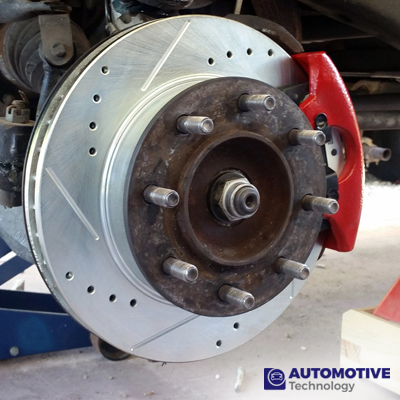How Brakes and Advanced Components Keep Automotive Safety on Track?

The evolution of automotive safety has been shaped by constant innovations in braking technology and advanced components. From traditional brake pads and discs to cutting-edge systems like anti-lock braking (ABS), electronic brake-force distribution (EBD), and autonomous emergency braking (AEB), the journey of automotive safety has been marked by significant milestones. In this article, we delve into the realm of brakes and braking system components, exploring how these advancements have not only improved stopping power but also revolutionized vehicle control, stability, and overall safety on the road. Join us as we uncover the intricate mechanisms and technologies that keep automotive safety on track, ensuring a safer and more efficient driving experience for everyone.
Evolution of Brake Materials
The evolution of brake materials represents a significant leap in automotive safety and performance. Traditional brake pads and discs, often composed of semi-metallic compounds, served their purpose but had limitations in terms of durability and heat dissipation. The shift towards advanced materials like ceramic and carbon-fiber composites has addressed these shortcomings with remarkable results.
Ceramic brakes, known for their exceptional heat resistance and durability, have become a staple in high-performance vehicles. They excel in demanding conditions, such as high-speed driving or intense braking situations, where maintaining consistent stopping power is crucial. This reliability not only enhances safety but also contributes to the overall driving experience, especially for enthusiasts and professionals who demand precision and control.
On the other hand, carbon-fiber composite discs offer a unique advantage by reducing rotational mass. This reduction in weight translates to improved handling, responsiveness, and agility, particularly during cornering and maneuvering. The lighter discs also contribute to reduced unsprung weight, optimizing suspension performance and overall vehicle dynamics.
Both ceramic and carbon-fiber composite materials represent the pinnacle of brake technology, combining durability, heat management, and performance in ways that traditional materials couldn't achieve. These advancements not only enhance safety by ensuring reliable stopping power but also elevate the driving experience by delivering enhanced control, responsiveness, and confidence on the road.
Advancements in Anti-Lock Braking System (ABS)
The introduction of Anti-Lock Braking Systems (ABS) has been a game-changer in vehicle safety, especially during hard braking scenarios. ABS works by continuously monitoring the speed of each wheel using sensors. When it detects that a wheel is on the verge of locking up, it intervenes by modulating brake pressure rapidly.
This rapid modulation of brake pressure prevents the wheel from completely locking up, which in turn helps drivers maintain steering control even under heavy braking. This is crucial, especially in emergency situations where sudden maneuvers might be necessary to avoid obstacles or hazards on the road.
ABS technology is particularly beneficial on slippery surfaces, such as wet or icy roads, where maintaining traction can be challenging. By preventing wheel lockup and skidding, ABS significantly reduces the risk of accidents caused by loss of control, offering drivers more confidence and safety, particularly during adverse weather conditions or unexpected driving scenarios.
Electronic Brake-Force Distribution (EBD)
Electronic Brake-Force Distribution (EBD) is a sophisticated braking system that works hand in hand with Anti-Lock Braking Systems (ABS) to enhance vehicle safety and performance. Unlike traditional braking systems that apply the same amount of force to all wheels, EBD dynamically adjusts the distribution of braking force to individual wheels based on various factors.
One of the key factors considered by EBD is the vehicle's load. When a vehicle is heavily loaded, such as when carrying passengers or cargo, the weight distribution changes. EBD takes this into account and adjusts the braking force accordingly to ensure that each wheel receives the appropriate amount of braking force to stop the vehicle effectively.
Moreover, EBD also considers road conditions. For example, if one wheel is on a slippery surface while the others have good traction, EBD will reduce the braking force on the slippery wheel to prevent it from locking up and skidding. This intelligent distribution of braking force helps maintain stability and control, especially during cornering or emergency maneuvers.
By optimizing brake performance across all wheels, EBD enhances overall vehicle safety and handling. It prevents situations where certain wheels may lock up or lose traction, improving the driver's ability to maneuver the vehicle safely in various driving conditions. This technology has become a standard feature in modern vehicles, contributing significantly to safer and more responsive braking experiences.
Brake Assist Systems
Brake Assist Systems (BAS) play a crucial role in enhancing vehicle safety, especially during emergency braking scenarios. These systems are designed to detect sudden and hard brake pedal inputs, typically indicating an urgent need for braking, such as during an emergency stop or when avoiding a collision.
Once a rapid and forceful brake pedal input is detected, the brake assist system intervenes by automatically applying maximum brake force. This immediate and forceful braking action supplements the driver's own braking effort, significantly reducing stopping distances and improving responsiveness.
The key advantage of brake assist systems is their ability to react swiftly in critical moments where every second counts. By ensuring that maximum braking force is applied without delay, BAS helps drivers avoid collisions or mitigate the severity of impact in emergency situations.
Additionally, brake assist systems are designed to work seamlessly with other braking technologies, such as Anti-Lock Braking Systems (ABS) and Electronic Brake-Force Distribution (EBD), further enhancing overall braking performance and control.
Overall, brake assist systems contribute to safer driving by reducing the risk of accidents during emergency braking maneuvers and providing drivers with added confidence and control when faced with sudden braking situations on the road.
Regenerative Braking in Hybrid and Electric Vehicles
Regenerative braking is a groundbreaking technology that has transformed the way hybrid and electric vehicles operate, bringing about notable improvements in both efficiency and sustainability. Unlike conventional braking systems that dissipate kinetic energy as heat, regenerative braking captures this energy during deceleration and converts it into electrical energy.
The process begins when the driver lifts their foot off the accelerator or applies the brakes, causing the electric motor to act as a generator. As the wheels slow down, the generator produces electricity, which is then fed back into the vehicle's battery pack. This regenerated energy can be used to power various systems in the vehicle or provide additional propulsion, depending on the driving conditions.
One of the significant benefits of regenerative braking is its positive impact on fuel efficiency. By harnessing energy that would otherwise be lost as heat, hybrid and electric vehicles can extend their driving range and reduce overall energy consumption. This efficiency gain is particularly pronounced in city driving or stop-and-go traffic, where frequent braking and acceleration cycles occur.
Moreover, regenerative braking helps reduce wear and tear on traditional braking components like brake pads and discs. Since the electric motor assists in slowing down the vehicle, there is less reliance on the mechanical brake system, leading to reduced maintenance costs and longer-lasting brakes.
From a sustainability standpoint, regenerative braking contributes to overall vehicle reliability and environmental friendliness. By maximizing energy use and minimizing waste, hybrid and electric vehicles equipped with regenerative braking systems align with the goals of reducing emissions and promoting sustainable transportation solutions.
In conclusion, the integration of regenerative braking in hybrid and electric vehicles represents a significant step forward in automotive technology. It not only improves fuel efficiency and reduces maintenance requirements but also supports the transition towards greener and more sustainable transportation options.
Autonomous Emergency Braking (AEB)
Autonomous Emergency Braking (AEB) represents a significant advancement in automotive safety technology, offering a proactive approach to accident prevention. This system integrates sensors, cameras, and sophisticated algorithms to continuously monitor the road ahead for potential collision risks.
When the AEB system detects an imminent collision and determines that the driver's reaction time is insufficient to avoid it, it autonomously initiates emergency braking. This rapid and precise braking action is designed to mitigate the impact of the collision or, ideally, prevent it altogether.
The effectiveness of AEB systems in real-world scenarios has been remarkable, with studies and data showing a significant reduction in the frequency and severity of accidents. By automatically applying brakes when necessary, AEB helps avoid rear-end collisions, pedestrian accidents, and other common types of crashes.
Furthermore, AEB systems are designed to work seamlessly with other safety features, such as lane departure warning systems and adaptive cruise control, enhancing overall vehicle safety and collision avoidance capabilities.
Overall, the emergence of Autonomous Emergency Braking (AEB) systems marks a crucial step towards safer roads, reducing the risk of accidents and improving the overall safety of drivers, passengers, pedestrians, and cyclists alike.
Conclusion:
Brakes and advanced components play a crucial role in keeping automotive safety on track. From innovative brake materials and ABS to intelligent systems like EBD, brake assist, regenerative braking, and AEB, these advancements collectively enhance braking performance, control, and responsiveness. As automotive technology continues to evolve, these safety features not only save lives but also set new standards for vehicle safety and performance in an ever-changing automotive landscape.



